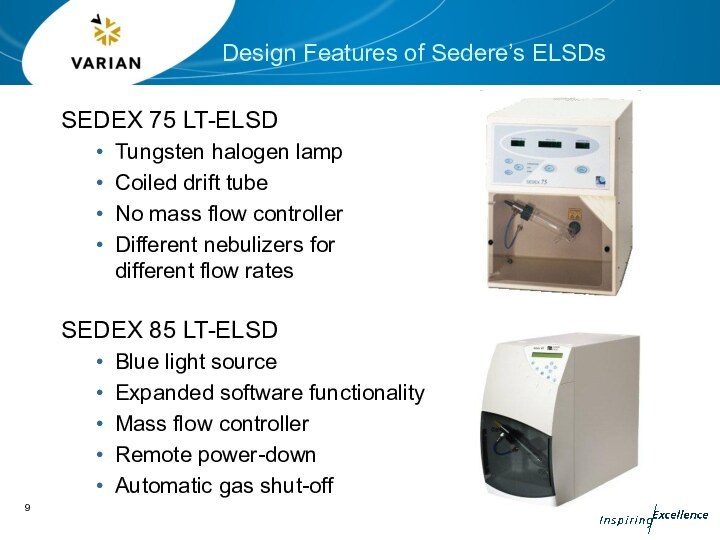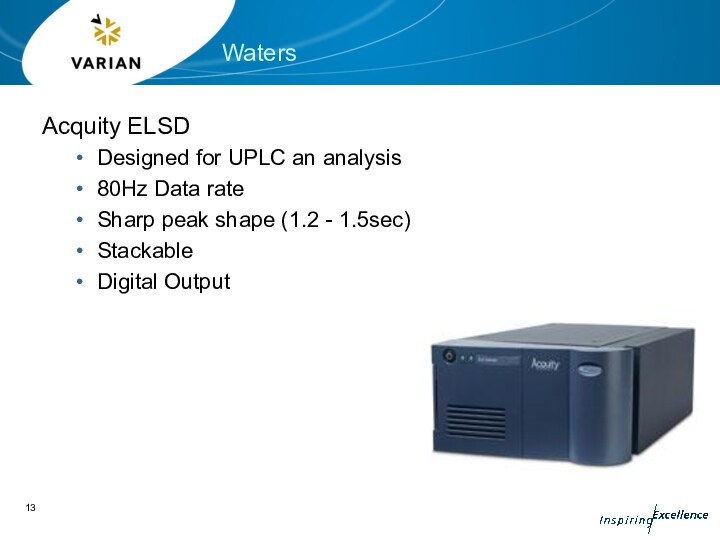consequently determines size of particle
Evaporation
Efficiency to remove
solvent Light source
Intensity
Wavelength
FindSlide.org - это сайт презентаций, докладов, шаблонов в формате PowerPoint.
Email: Нажмите что бы посмотреть





























Design Features of Alltech’s ELSDs
Design Features of Sedere’s ELSDs
Design Features of Sedere’s ELSDs
Design Features of Sedere’s ELSDs
Waters
Design Features of Waters’ ELSDs
SofTA
Design Features of SofTA’s ELSDs
Schambeck
Design Features of Schambeck’s ELSDs
ESA
Design Features of ESA’s ELSDs
Charged Aerosol Detector (CAD)
CAD vs ELSD
CAD vs ELSD